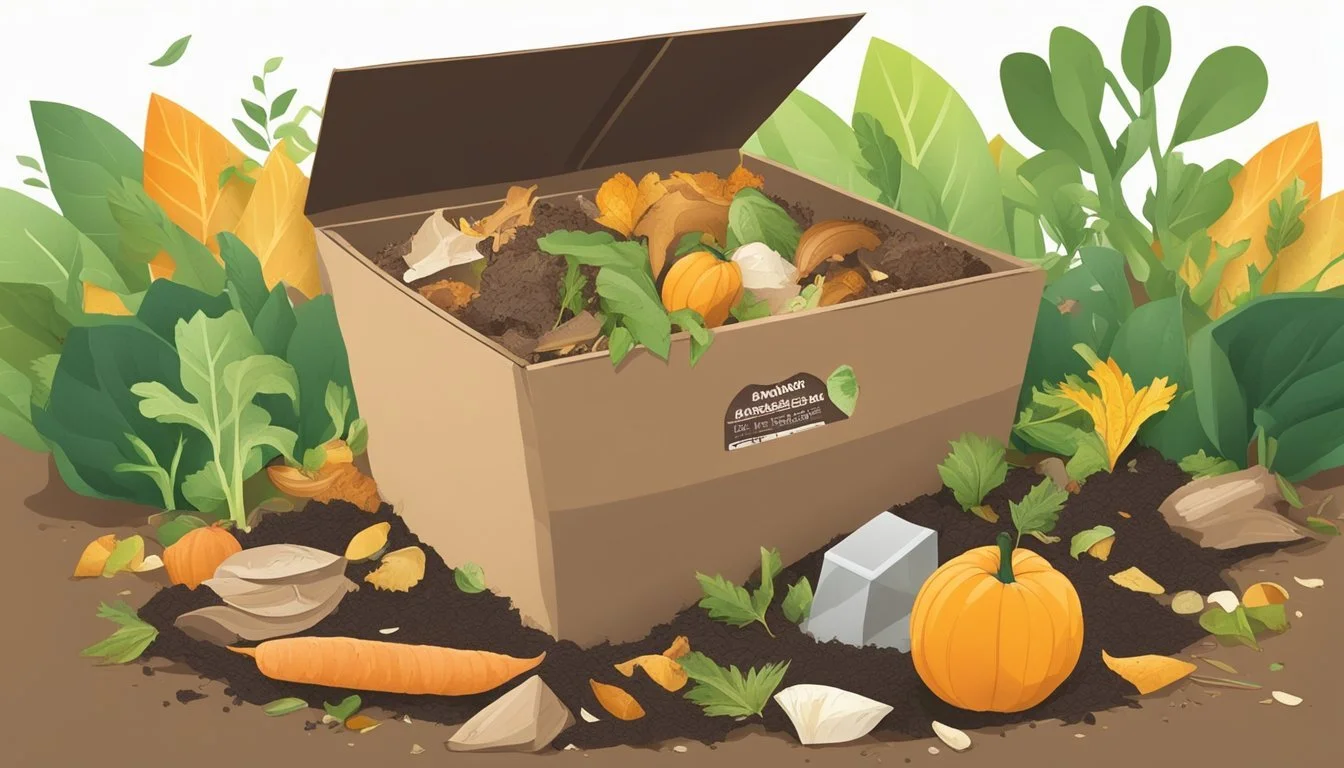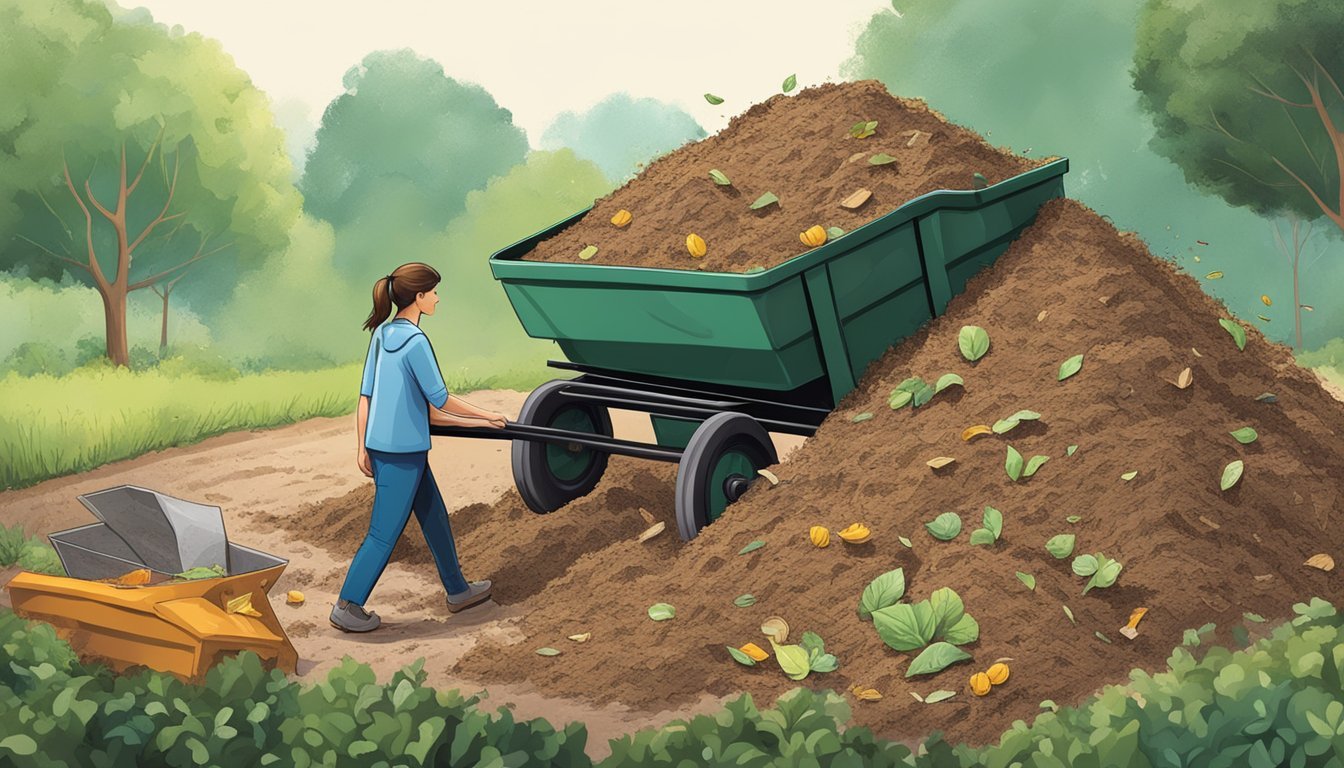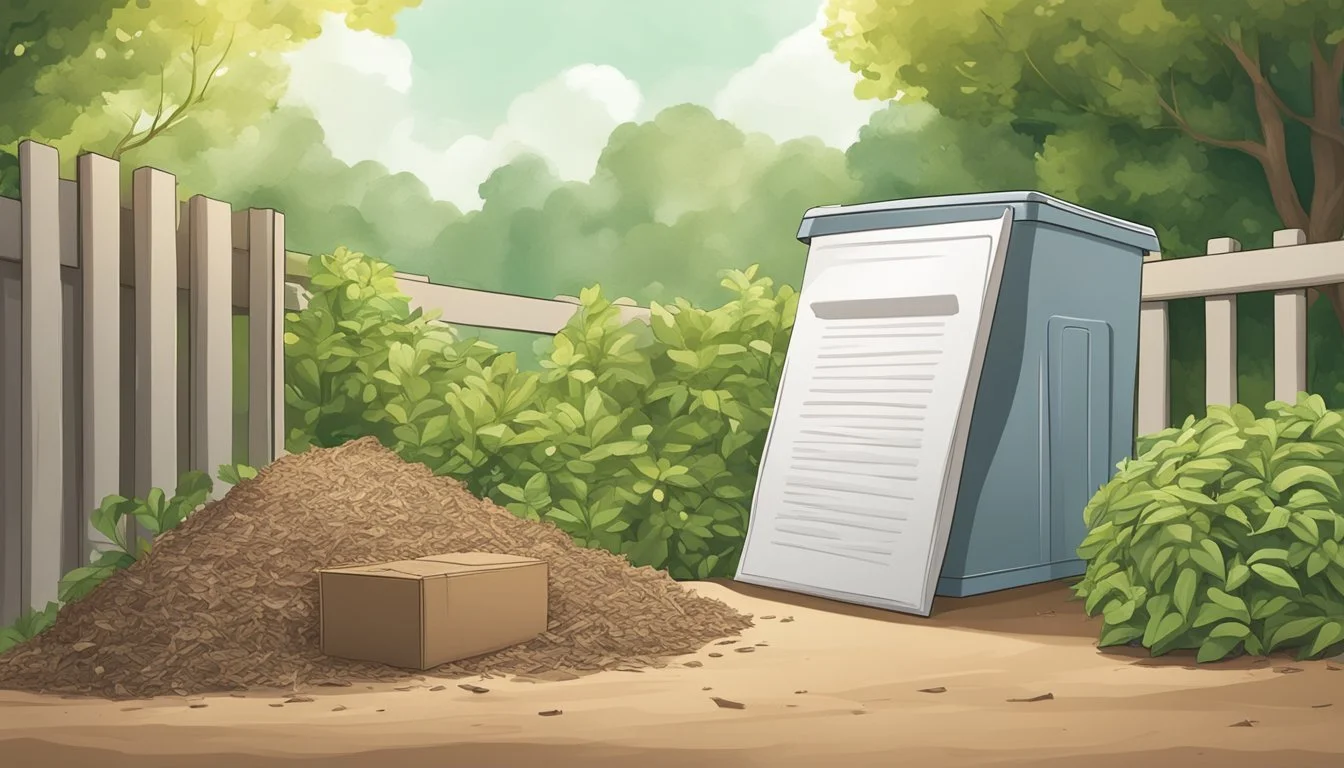Can You Compost Paperboard?
Unveiling the Truth About Recycling Paperboard
Paperboard, the thick paper-based material used in packaging items such as cereal boxes and shoe boxes, is an organic compound that can break down naturally over time. Many people are exploring ways to reduce waste and carbon footprints, and composting paperboard is a viable option. Composting not only diverts waste from landfills but also enriches soil by adding nutrients as the materials decompose.
In a compost bin or pile, microorganisms break down organic matter, and paperboard is no exception. It contains carbon, a necessary element in the composting process. However, not all paperboard is suitable for compost. For example, paperboard coated with plastic, wax, or foil is not compostable because these materials do not break down easily and can contaminate the compost with substances harmful to the environment.
When adding paperboard to compost, it should be shredded or broken down into smaller pieces to accelerate the decomposition process. Integrating it with nitrogen-rich materials like food scraps or grass clippings can help maintain a balanced carbon-to-nitrogen ratio, essential for effective composting. By ensuring paperboard is free of contaminants and is properly prepared, it can successfully be turned into nutrient-rich compost for gardening and agricultural use.
Benefits of Paperboard in Composting
Paperboard, a thin and often recycled material, contributes positively to the composting process by enriching soil and reducing landfill waste. Utilizing this compostable resource benefits both garden health and environmental sustainability.
Nutrient Enrichment for Soil
Composting paperboard adds essential carbon to the compost mix, balancing the nitrogen-rich materials like manure and green waste. A well-balanced compost acts as a nutritious soil additive. It decomposes to release nutrients that improve soil structure and foster healthy plant growth. When paperboard breaks down, it provides a food source for the microorganisms vital to the composting process, which in turn, enriches the garden soil.
Reduction of Landfill Waste
Incorporating paperboard into compost helps divert waste from landfills, where organic waste generates methane, a potent greenhouse gas. By composting paperboard, individuals contribute to a decrease in methane emissions. The practice of composting not only recycles paperboard but also minimizes an individual's carbon footprint, supporting a more sustainable way of managing waste and promoting a healthier environment.
Types of Paperboard and Compostability
When considering the compostability of paperboard, it is essential to distinguish between the types available. The presence of coatings, inks, and dyes plays a significant role in determining whether a paperboard can be satisfactorily composted.
Uncoated and Plain Brown Cardboard
Plain brown cardboard, such as uncoated corrugated cardboard commonly used for shipping boxes, is highly compostable due to its nearly pure cellulose content. It should be free of any shiny coatings or colored dyes. This type of cardboard decomposes effectively in a compost pile, contributing to the 'brown' materials which provide carbon to the composting process. Pizza boxes and other similar materials, if not contaminated with food residues or grease, can also be included in this category.
Coated, Glossy, and Printed Paperboard
In contrast, paperboard that is coated, glossy, or printed with colored inks, such as cereal boxes, requires careful consideration before composting. The coatings often contain plastics or waxes to give products a shiny appearance, which are not suitable for composting environments. These materials may take much longer to break down, if at all, and can introduce contaminants. Furthermore, inky newspapers, although made from paper, can contain inks that may be toxic or slow to decompose and hence, should be avoided if the inks are not soy-based or otherwise marked as eco-friendly.
Preparation of Paperboard for Composting
Proper preparation of paperboard for composting ensures that it decomposes quickly and does not introduce any harmful substances into the compost. This process involves removing contaminants, breaking the paperboard down, and managing moisture and aeration levels.
Removing Contaminants
It is crucial to examine the paperboard for plastic, tape, labels, and plastic stickers before adding it to the compost pile. These materials do not break down and can introduce toxins into the compost. Thoroughly remove any adhesive residues, which often contain BPA or other non-compostable elements. Additionally, if the paperboard is treated with bleach or has grease residue, it should not be composted as these substances can disrupt the composting process and contaminate the final compost.
Shredding and Breaking Down
Shredding or tearing the paperboard into small pieces accelerates the decomposition process by increasing the surface area available to composting organisms. When breaking down paperboard, aim for pieces no larger than an inch. The smaller the pieces, the faster they will decompose. If the paperboard is not already in a shredded form, it's advantageous to shred it manually or with a mechanical shredder. Paper towels and shredded paper, as long as they are unbleached and free of contaminants, can also be added to the mix to enhance the breakdown process.
Balancing Moisture and Aeration
For successful composting, maintaining an optimal balance between moisture and aeration is essential. The compost should be as moist as a wrung-out sponge. Over-wetting can lead to anaerobic conditions, which slow down the composting process and can cause unpleasant odors. Conversely, too little moisture can halt decomposition. Stirring or turning the compost regularly introduces the necessary oxygen and aids in even moisture distribution. When adding paperboard, it is vital to mix it with nitrogen-rich materials to maintain the balance between 'greens' and 'browns.'
Managing the Compost Pile
When composting paperboard, it's essential to correctly manage the compost pile to facilitate decomposition and maintain a healthy balance between materials. This involves adjusting the carbon to nitrogen ratio and layering brown and green materials effectively.
Adjusting Carbon to Nitrogen Ratio
The carbon to nitrogen (C) ratio is paramount in composting. Paperboard, as a brown ingredient, is high in carbon. For an optimal compost, maintain a C ratio of about 30:1. High nitrogen green materials, such as kitchen scraps, coffee grounds, and fresh grass clippings, need to balance the carbon-rich brown materials like paperboard, sawdust, and dead leaves.
Layering Brown and Green Materials
Layering is a crucial technique in maintaining a compost pile:
Brown Materials (Carbon-Rich):
Paperboard (shredded)
Sawdust
Dead leaves
Green Materials (Nitrogen-Rich):
Kitchen scraps (e.g., fruit and vegetable peels)
Coffee grounds and tea bags
Fresh grass clippings
Aim to layer brown and green materials in alternating layers to enhance aeration and decomposition. The brown layers absorb excess moisture from the green materials, while green layers provide the necessary nitrogen. Regular turning of the pile ensures even breakdown and aeration, which is critical for successful composting.
Common Concerns and Solutions
When contemplating the addition of paperboard to a compost pile, it’s crucial to address two main areas of concern: the presence of non-compostable elements and potential toxins which can influence the quality and safety of the compost produced.
Dealing with Non-Compostable Elements
Non-compostable elements in paperboard, such as plastic coatings or tape, can hinder the decomposition process. While paperboard like egg cartons and toilet paper rolls are great sources of brown material for compost, they must be free from glossy finishes and adhesives. Greasy paper, commonly found with food waste like pizza boxes, is another concern, as oil can attract pests and disrupt the balance needed for efficient composting.
To solve these issues:
Remove any plastic, stickers, or tape before composting.
Exclude greasy or food-covered paperboard, particularly ones with meat, cheese, or dairy products, which can create odors and attract pests.
Shred or tear the paperboard into smaller pieces to speed up the decomposition process.
Use recycled paper products that have minimal ink and are less treated chemically to ensure a cleaner compost.
Addressing Potential Toxins
The presence of chemicals such as BPA (Bisphenol A), bleach, glues, and heavy metals from inks can pose significant risks. For instance, BPA, an industrial chemical, can leach into the compost, while dioxin, a byproduct of bleaching, is a known carcinogen that can be harmful when introduced into compost. Moreover, concerns about heavy metals and other chemical residues in the compost necessitate careful consideration of paperboard sources.
To mitigate these concerns:
Choose unbleached, compostable paperboard which has not been treated with chlorine or bleach.
Avoid paperboard with glossy, colored ink as it may contain heavy metals or toxic dyes.
Opt for paperboard that uses starch-based or non-toxic glues.
Trust certified compostable products and seek out manufacturer guidelines for compostability to ensure the paperboard can be safely broken down.
By systematically addressing these elements, you can ensure that your compost remains a responsible addition to the garden, aiding in mulch production and reducing landfill waste without introducing unwanted chemicals into the ecosystem.
Environmental Impact and Regulations
Paperboard composting, when executed in alignment with regulatory guidelines, can significantly minimize the volume of waste in landfills. It not only recycles nutrients back into the soil but also adheres to meticulous environmental standards to ensure a positive impact on ecosystems.
EPA Guidelines and Best Practices
The U.S. Environmental Protection Agency (EPA) establishes specific guidelines for composting organic materials, including paperboard. These practices foster the breakdown of paperboard into nutrient-rich compost while mitigating potential pollutants. The EPA emphasizes the importance of aerobic composting, which requires oxygen to effectively decompose organic matter. The agency also recommends the use of paperboard that is devoid of inks, adhesives, and coatings that could contaminate the compost.
Materials: Use clean, uncoated paperboard.
Composting Process: Maintain aerobic conditions.
End Product: Achieve biologically-stable compost, free of harmful pollutants.
Local Composting Standards
Composting regulations can vary greatly depending on local environmental policies. Communities often dictate their own standards for composting to tailor practices to specific regional needs and ecological goals. Local standards typically include parameters for:
Acceptable materials: what forms of paperboard can be composted.
Levels of permissible contaminants, like inks or adhesives.
Monitoring of compost for biosolids and environmental safety.
Local entities might provide resources and educational materials to ensure residents are aware of and adhere to composting standards. These efforts ensure that recycled paper and paperboard entering compost streams are aligned with both EPA guidelines and local environmental goals, thereby enhancing soil quality while protecting local ecosystems.
Innovative Alternatives to Traditional Composting
In the realm of composting, traditional methods typically involve creating a compost pile or bin where organic matter breaks down over time. However, when composting paperboard, which is a type of cardboard, two innovative and efficient alternatives stand out for their ability to enrich soil while managing waste: vermicomposting and the Bokashi fermentation process.
Vermicomposting with Paperboard
Vermicomposting involves the use of specific species of worms, often red wigglers, to break down organic waste into nutrient-rich compost. For those incorporating paperboard into their composting process, vermicomposting offers a unique advantage:
Worms can consume shredded paperboard along with other organic materials.
The resulting compost, known as worm castings, is a high-quality soil amendment.
To successfully vermicompost paperboard, it must be:
Free of toxic inks or lamination.
Cut or shredded into small pieces to ease consumption.
Bokashi Fermentation Process
The Bokashi process is a form of anaerobic composting that ferments organic waste, including paperboard, in a sealed container. Unlike traditional composting, the Bokashi method allows for the breakdown of materials in a:
Faster timeframe, typically within weeks.
Space-efficient manner, ideal for indoor composting.
During the process, an individual adds layers of waste to a bin, sprinkling each with a mixture of microorganisms (Bokashi bran) that facilitate fermentation. Key considerations for paperboard include:
Ensuring it is non-glossy and not lined with plastic or metals.
Tearing the material into smaller pieces for uniform fermentation.








